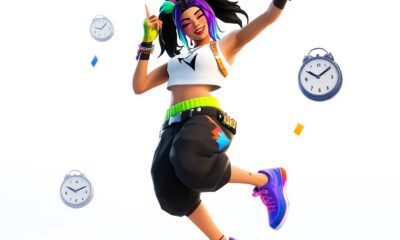Fortnite Creative/ UEFN
Best Practices for Developing a Fortnite Game Using UEFN
A Beginner’s Guide to UEFN Game Development

Fortnite, a wildly popular online multiplayer game, has captured the attention of gamers worldwide with its unique blend of action, strategy, and building. The game’s success has prompted many aspiring game developers to dive into the world of Unreal Editor (UEFN) to create their own Fortnite-inspired games. In this comprehensive guide, we’ll explore the essential steps that will help you create the best Fortnite game using Unreal Editor.
Let’s dive in!
1 | Understanding Unreal Engine
Before diving into game development, it’s crucial to understand the powerful game engine behind Fortnite: Unreal Engine. Developed by Epic Games, this versatile and robust engine is perfect for creating high-quality, immersive experiences.
Key features of Unreal Engine include:
- Blueprint scripting
- Real-time rendering
- Physics-based simulations
- Cross-platform compatibility
2 | Mastering the Basics of Unreal Editor(UEFN)
Unreal Editor is the primary tool for creating games in Unreal Engine. Familiarize yourself with the editor’s interface and essential functions, including:
- Viewports
- World Outliner
- Content Browser
- Modes Panel
- Details Panel
If you are new to coding and plan to learn Verse, begin with the very basics, such as creating buttons and building user interfaces. Then as you learn more progress to create more intricate systems!
3 | Designing Your Fortnite Game
To create the ultimate Fortnite game, you’ll need to develop a compelling and well-thought-out game concept. Consider the following elements:
- Game mode (e.g., Battle Royale, Creative, or Save the World)
- Map design and terrain
- Character and weapon customization
- Unique gameplay mechanics
4 | Building Your Game World with Unreal Editor(UEFN)
Unreal Editor’s powerful tools make it easy to bring your game concept to life.
Focus on these critical aspects:
- Terrain sculpting and painting
- Level design and layout
- Placing props and assets
- Lighting and atmosphere
5 | Implementing Gameplay Mechanics
Fortnite’s gameplay mechanics are a significant part of its appeal. Incorporate similar mechanics into your game using Unreal Editor:
- Blueprint scripting for character movements, weapon usage, and building
- Physics simulations for realistic movement and interaction
- Particle systems for visual effects (e.g., explosions, weather)
6 | Optimizing Your Game for Performance
An optimized game ensures a smooth and enjoyable experience for players. Take the following steps to optimize your game:
- Efficiently use LODs (Level of Detail) for assets
- Utilize occlusion culling to hide unseen objects
- Optimize texture sizes and materials
- Stay within the memory limits
7 | Testing and Iterating Your Game
Before releasing your game, you’ll need to test it thoroughly to identify and fix any bugs or issues. Follow these tips:
- Utilize Unreal Editor’s built-in tools for error checking
- Play-test your game with a variety of hardware configurations
- Gather feedback from players and make necessary improvements
COMMUNITIES TO CHECK OUT
Some great communities you can access to Fortnite UEFN Game Testing include:
• FCHQ: https://fortnitecreativehq.com
• THE CREATIVE BLOK: https://thecreativeblok.com
Happy Developing!
Creating the best Fortnite game using Unreal Editor is a challenging but rewarding endeavor!
By mastering the engine’s tools, designing a unique game concept, and paying close attention to gameplay mechanics, optimization, and testing, you can develop a high-quality, captivating gaming experience.
All
UEFN & Fortnite Creative: Game Project Management Methodologies Explained
Learn Agile, Waterfall, and Hybrid project management methodologies for UEFN and Fortnite Creative. Discover how to choose the right one for your game development project.

Managing a UEFN (Unreal Editor for Fortnite) or Fortnite Creative project successfully requires more than just creative ideas—it demands a structured methodology. If you’re developing a simple mini-game or a complex adventure mode, project management methodologies help you stay on track, meet deadlines, and iterate efficiently. This article explores Agile, Waterfall, and Hybrid models, offers practical advice for choosing the best approach, and provides sample project charts using an adventure game as a case study.
Understanding and applying the right project management approach is particularly important in collaborative environments like UEFN, where multiple creators often work together across disciplines. Choosing the right method enables teams to minimize rework, streamline testing and iteration, and deliver polished and engaging content that aligns with player expectations.
What Are Project Management Methodologies in Game Development?
Project management methodologies are structured frameworks that help teams plan, execute, and manage game projects from concept to launch. They define workflows, communication styles, deliverables, and milestones.
In the context of Fortnite Creative and UEFN, these methodologies help:
- Coordinate level designers, scripters, and asset creators
- Organize timelines and iteration loops
- Integrate playtesting and community feedback
By aligning development workflows with a proven methodology, creators can better manage complexity, reduce risk, and accelerate delivery. Each methodology brings a unique set of practices tailored to different project types and team dynamics.
Project Management Methodologies for UEFN and Fortnite Creative Projects: Choosing and Using the Right One
Methodology 1: Agile Game Development
Overview
Agile emphasizes iteration, adaptability, and feedback. Teams work in short cycles (sprints) with frequent evaluations. It’s based on the principles of the Agile Manifesto, focusing on individuals and interactions, working software, customer collaboration, and responding to change. In game development, Agile is popular because it facilitates fast iteration and user-centered design, allowing teams to pivot quickly based on feedback.
Agile empowers teams to tackle uncertainty and creative challenges by breaking projects into manageable components. In UEFN, where gameplay ideas often evolve mid-development, Agile enables teams to validate ideas rapidly through prototyping and playtesting.
Key Concepts
- Iterations (Sprints): 1–4 week cycles
- Scrum Roles: Product Owner, Scrum Master, Team
- Ceremonies: Sprint Planning, Daily Stand-ups, Sprint Review, Retrospective
- Kanban Boards: Visual task tracking
Advantages
- Frequent playtesting and improvements
- Flexibility to adapt to creative changes
- Fast feedback loop from players or stakeholders
- Empowered, cross-functional teams with shared ownership of deliverables
Challenges
- Requires discipline to avoid feature creep
- Difficult to track overall progress without metrics
- Risk of inconsistent design if not managed carefully
- Less emphasis on documentation may create gaps in knowledge retention
Tools for Agile in UEFN
- Trello, Jira, Notion, Codecks, Asana
“Agile methodologies have become the de-facto standard in game development due to their adaptability and player-centric focus.” — Agile Game Development by Alistair Cockburn
Methodology 2: Waterfall
Overview
Waterfall is a linear, structured approach where each phase (Design, Development, Testing) must be completed before the next. It emphasizes comprehensive documentation, strict timelines, and predetermined deliverables. While less flexible than Agile, Waterfall provides strong clarity and control—making it useful for tightly scoped or publisher-driven projects.
In Fortnite Creative, Waterfall can work well for clearly defined experiences like a single-player narrative game, where all gameplay, art, and scripting elements are established upfront and changes during development are minimal.
Best For:
- Projects with fixed scope and requirements
- Short narrative experiences with predictable development
- Teams requiring well-documented workflows and approval checkpoints
Advantages
- Clear documentation and planning
- Straightforward milestone tracking
- Easier budget estimation
- Ideal for asset pipelines where detailed specs are fixed
Limitations
- Hard to adapt to feedback
- Risk of wasting time on early decisions that later prove faulty
- Limited flexibility for live updates or community-driven features
- Can delay valuable feedback until late stages of development
Methodology 3: Hybrid Models
Overview
Hybrid models, as stated in: Hybrid Game Development Models by Sarah Lee, combine the predictability of Waterfall with the adaptability of Agile. This approach acknowledges that no single methodology fits all projects and blends elements to suit the team’s strengths, goals, and constraints. It’s especially effective in game development, where some features require flexibility (game mechanics) while others need predictability (cutscenes, localization).
Hybrid approaches are particularly useful in UEFN projects that balance creative experimentation with structured milestones, such as large collaborative adventure games that require both artistic freedom and technical checkpoints.
Examples
- Agile-Waterfall: Waterfall for planning; Agile for execution
- Iterative-Incremental: Gradual build-up with cycles
- Lean-Agile: Reduces waste; maximizes feature value
- Kanban-Scrum: Combines visual flow with sprint planning
Use Cases in Fortnite Creative
- Adventure maps with clear start-to-finish gameplay but evolving mechanics
- PvP arenas that need user feedback-driven balance updates
- Story-driven experiences where planning and iteration go hand-in-hand
How to Choose the Best Methodology for Your UEFN Project
1. Define Your Scope
- Linear story? Waterfall may suffice.
- Open-world exploration or dynamic gameplay? Consider Agile or Hybrid.
When evaluating scope, ask whether your game will evolve based on playtesting and feedback or follow a well-established vision from day one. This will influence how much flexibility your chosen methodology needs to support.
2. Team Size and Experience
- Solo developer: Kanban or Agile with light documentation
- Small team: Scrum with clear roles and stand-ups
- Larger teams: Hybrid model to separate design and development phases
Smaller teams benefit from the simplicity and adaptability of Agile, while larger teams may require hybrid structures to manage complexity and synchronize work across departments.
3. Community Engagement
- If community feedback is central, Agile is ideal.
- If you’re under a tight launch schedule, Waterfall may provide better predictability.
High levels of engagement from your player base mean your game must evolve quickly. Agile and hybrid approaches allow you to incorporate that feedback rapidly and effectively.
Sample Implementation: Adventure Game Project
Example 1: Agile Sprint Plan for UEFN Adventure Game
This example shows how Agile allows for fast prototyping and iteration, helping teams identify what works through hands-on testing and direct user feedback.
Sprint 1: Core Mechanics Prototype
- Task 1: Movement System
- Task 2: Quest Trigger System
- Task 3: Dialogue System
Sprint 2: First Playable Map
- Task 1: Level 1 Terrain Design
- Task 2: Key Item Integration
- Task 3: NPC Placement
Sprint 3: Player Feedback Loop
- Task 1: Collect playtest feedback
- Task 2: Adjust NPC behavior
- Task 3: Add new puzzles
Example 2: Waterfall Plan for the Same Game
This structure works best when all systems and design choices are known upfront. Each stage leads directly to the next, with limited room for experimentation.
Phase 1: Design
- Concept doc
- GDD
- Level flowchart
Phase 2: Development
- Implement mechanics
- Script events
- Import assets
Phase 3: Testing & Polish
- Playtesting
- Bug fixing
- Final optimization
Example 3: Agile-Waterfall Hybrid Gantt Chart
A hybrid timeline offers structured pre-production and release phases while leveraging iterative cycles during the most creatively volatile parts of development.
Month 1: Planning (Waterfall)
- Finalize GDD and asset list
Months 2–3: Agile Execution
- 4 Sprints (level design, mechanics, testing, story layering)
Month 4: Final Polishing (Waterfall)
- Lock content
- Bug squashing
- Final publish to UEFN
Tips for Successful Implementation
- Use tools like Asana, Notion or Jira for structured task management
- Document key learnings from each sprint
- Create a Feature Prioritization Matrix
What Is a Feature Prioritization Matrix?
A Feature Prioritization Matrix is a visual tool used to evaluate and rank game features based on key criteria such as player impact, development effort, implementation risk, and overall value to the experience. This matrix helps UEFN creators and teams make data-informed decisions about which features to focus on during development sprints or planning phases.
Here’s a simple example:
| Feature | Player Impact | Dev Effort | Risk | Priority |
|---|---|---|---|---|
| Core movement system | High | Medium | Low | High |
| Decorative assets | Low | High | Low | Low |
| Boss encounter system | High | High | High | Medium |
| Multiplayer scoreboard | Medium | Medium | Medium | Medium |
This matrix empowers creators to balance gameplay quality with resource limitations, ensuring the most impactful features are delivered first. For solo or indie devs, it’s an effective way to prevent scope creep and stay focused on what truly improves the player experience.
- Hold regular retrospectives—even solo devs can journal reflections
Successful implementation hinges on communication, accountability, and the ability to measure progress. Whether you follow Agile or a hybrid model, build in checkpoints and feedback loops that align with your workflow.
You Can Build Better, Faster by Mastering UEFN Project Management for Creative Success
Choosing the right project management methodology can dramatically impact your Fortnite Creative or UEFN project’s success. Agile brings flexibility and quick iteration, Waterfall ensures structured development, and Hybrid models give you the best of both worlds. The key is aligning your choice with your project’s needs, team structure, and goals.
With the growing complexity of user-generated content and the need for fast iteration, adopting the right methodology is not just helpful—it’s essential. By understanding the strengths and limitations of each approach, UEFN creators can confidently build experiences that are both creatively fulfilling and technically sound.
References
- Agile Game Development by Alistair Cockburn
- Hybrid Game Development Models – Sarah Lee
- Deep Dive: Project Superpowers and Project Management Methodologies (YouTube)
- Agile Alliance: Kanban in Game Dev
UEFN and FNC Project Management FAQs
Q: Is Agile suitable for solo Fortnite Creative devs?
A: Yes! Tools like Trello or Notion help track tasks. Agile’s flexibility is great for iterative work.
Q: Can I switch methods mid-project?
A: You can, especially between Agile and Hybrid, but document changes clearly to avoid confusion.
Q: What if my scope keeps changing?
A: Agile or Hybrid methods are ideal for evolving projects. Feature prioritization is critical.
Q: Do I need to use expensive tools?
A: No. Many tools like Trello, Notion, and GitHub boards are free and effective for UEFN devs.
All
How to Master the Fortnite Discover Algorithm
Learn how the Fortnite Discover algorithm works, including attraction, engagement, and satisfaction metrics. Boost your island’s visibility and success with expert tips.

Algorithms in Fortnite Discover
In Fortnite, particularly within Fortnite Creative and UEFN (Unreal Editor for Fortnite), algorithms guide the Discover feature. The Fortnite Discover algorithm uses complex data analysis, machine learning, and behavioral tracking to recommend islands based on player preferences and engagement.
Understanding Algorithms
An algorithm is a structured, step-by-step procedure designed to solve a specific problem or achieve a particular outcome. Algorithms are fundamental to computer science and gaming, underpinning functionalities from matchmaking to content discovery.
Listen in on Spotify
Fortnite Discover Metrics
How Attraction is Measured
Attraction in Fortnite Creative involves multiple key metrics:
- Unique players per impression over 96 hours: Evaluates how effectively initial views translate into sustained player engagement.
- Clicks per impression (CTR): Indicates how effective your thumbnails and titles are in capturing player interest.
- Minutes played per impression: Assesses whether impressions result in prolonged gameplay sessions.
- Early session drop-off rate: Percentage of players who leave within the first two, five, or ten minutes of gameplay, highlighting retention effectiveness early on.
How Engagement is Measured:
Key metrics driving engagement include:
Social play: Tracks gameplay time within social groups, excluding idle periods (no input for sixty seconds). Average session length also contributes significantly.
- Minutes per player (over a 96-hour period): Reflects the average playtime per player.
- Day 1 (D1) retention: Percentage of players returning the day after their initial session.
- Day 7 (D7) retention: Percentage of players returning one week after their initial session.
- Unique players over 96 hours: Measures the diversity and breadth of player interaction.
Key Components of Fortnite Discover Algorithm
Discover Score
Calculated via a modified z-score, the Discover Score evaluates islands based on three primary metrics:
- Attraction: Measures the island’s ability to capture players’ attention initially. Key factors include click-through rates (CTR), minutes played per impression, and player retention early in sessions.
- Engagement: Evaluates how well the island retains players over time. Metrics include average session duration, day 1 and day 7 retention, and the number of unique players.
- Satisfaction: Reflects qualitative player feedback, such as ratings, endorsements (favorites, recommendations), and responses from post-match surveys.
Sophistication Score
This score highlights islands that demonstrate higher complexity and creativity, factoring in the development effort, use of advanced features like custom scripting (Verse), animations, and unique textures.
Island Embedding Framework
Standardizes data like titles, tags, descriptions, and gameplay metrics into numerical representations to facilitate personalized recommendations based on player interests and behavior.
Machine Learning Models or Artificial Intelligence used in Fortnite Discover
Fortnite utilizes several recommendation models:
- Item-based: Suggests islands similar to ones recently played.
- User-based: Recommends islands aligning with a player’s historical gameplay preferences.
- Sequencing-based: Predicts the next island a player might enjoy based on their play history.
Tips for Becoming a Master of the Fortnite Discover Algorithm:
- Improve Attraction:
- Focus on click-through rate (CTR) by designing eye-catching thumbnails and compelling titles. Test different thumbnails with A/B testing to find the most engaging designs.
- Ensure that your island description is clear and intriguing, highlighting the core experience players will have. Use relevant tags to categorize your island correctly.
- Increase Engagement:
- Maximize minutes per player by designing gameplay that keeps players engaged. Provide meaningful progression, rewards, or challenges that motivate players to keep playing.
- Focus on retention by offering a rewarding experience that encourages players to return. Consider introducing new content or features periodically.
- Analyze engagement data to understand where players tend to leave your island and make adjustments to reduce early drop-off.
- Boost Satisfaction:
- Focus on creating a fun and high-quality experience. Gather feedback from players through surveys and direct feedback, and use this to refine your island.
- Encourage players to favorite or recommend your island by making it more shareable and enjoyable. Respond to player feedback and make improvements based on their suggestions.
- Enhance Sophistication:
- Incorporate advanced features such as custom scripting (Verse code), animations, and more complex game mechanics that demonstrate technical skill and creativity.
- Use innovative design techniques and unique content to stand out from the crowd and increase your Sophistication Score.
- Utilize Analytics:
- Regularly review your analytics (such as retention rates, minutes played, and CTR) to understand how players are interacting with your island. Use this data to inform changes and improve player experience.
- Keep an eye on the Insights Dashboard and use the feedback from the Creator Portal to fine-tune your island’s performance.
- Iterate Continuously:
- Keep updating your island after launch based on player feedback and changing trends. Fortnite’s ecosystem evolves, and so should your island to remain relevant and engaging.
- Test new features and keep an eye on community feedback. Islands that continuously improve tend to rank better in Discover.
By focusing on these metrics and best practices, you can work with the algorithm rather than against it, optimizing your island’s visibility and ensuring that it appeals to the largest audience possible.
Planning is Key in Order to Master the Fortnite Discover Algorithm
In our recent article on creating an effective marketing plan, we explored key strategies tailored for general marketing success. Now, let’s delve into how you can adapt those principles specifically to master the Fortnite Discover Algorithm.
Here’s a concise example illustrating some actions you can take to master the Discover Algorithm. Feel free to utilize our practical template or use the download link below to edit the template:
Fortnite Discover Action Item Plan Example
| Action Item | Objective | Timeline | Metrics to Track | Responsible Party | Tools/Resources |
|---|---|---|---|---|---|
| Improve Thumbnail & Title Design | Make your island visually appealing to attract clicks | Ongoing, update regularly | Click-through rate (CTR), Impressions | Marketing Team | Photoshop, Canva, or other design tools |
| A/B Test Thumbnails | Test various thumbnails to see which attracts more clicks | Test every 1-2 weeks | CTR, player feedback on thumbnails | Marketing & Design Team | A/B Testing Tools, Photoshop |
| Optimize Island Description & Tags | Make sure your island’s details are engaging and relevant | Update regularly based on player behavior | Player engagement, click-through rates | Content Creation Team | UEFN (Unreal Editor for Fortnite), Creator Portal |
| Increase Engagement (e.g., gameplay improvements) | Engage players by making gameplay fun and interactive | Ongoing, track and adjust gameplay | Minutes per player, Day 1 and Day 7 retention | Game Design Team | UEFN, Player Feedback Tools |
| Focus on Retention (e.g., rewards, progression) | Ensure players are motivated to come back by adding progression and rewards | Ongoing, track player retention | Retention rates, player feedback on rewards | Game Design & Progression Team | Analytics Dashboard, In-Game Feedback |
| Analyze Engagement Data for Drop-off Points | Identify where players drop off and improve those areas | Ongoing, adjust based on insights | Player drop-off points, time spent in-game | Analytics Team | Analytics Dashboard, User Flow Data |
| Encourage Player Feedback (e.g., surveys, direct feedback) | Collect feedback to improve the overall player experience | Ongoing, collect feedback at regular intervals | Survey responses, endorsement rate | Community Management Team | Surveys, Creator Portal |
| Monitor Endorsements & Recommendations | Boost player satisfaction by encouraging positive interactions | Ongoing, track player behavior | Favorites, recommendations, survey feedback | Community & Marketing Team | Creator Portal, Community Tools |
| Enhance Island Sophistication (Advanced Features) | Develop a more complex, polished island with custom code and advanced features | Ongoing, add complexity after each major update | Sophistication score, features used | Development Team | UEFN, Verse code, Animation Tools |
| Regular Updates & Iterations (based on player feedback) | Keep your island fresh with updates based on analytics and feedback | Ongoing, update your island every 2-4 weeks | Player return rate, satisfaction survey feedback | Content Creation & Game Design Teams | Analytics Dashboard, Player Feedback |
| Utilize Creator Portal Analytics | Analyze the data to understand what works and what doesn’t | Review analytics every week | Analytics Dashboard, player engagement metrics | Analytics & Development Teams | Creator Portal, Analytics Dashboard |
| Incorporate Advanced Devices & Verse Code | Improve sophistication with custom devices and code | Integrate new features every month | Sophistication score, custom features used | Development Team | UEFN, Verse code, Development Tools |
| Increase Player Interaction (e.g., multiplayer, social play) | Make your island more social and interactive to increase playtime | Ongoing, introduce social aspects into gameplay | Social playtime, multiplayer usage | Game Design & Community Management Team | Social Play Tools, Community Interaction |
| Optimize for High Playtime per Impression | Increase the time spent playing through engaging content | Ongoing, update and iterate to increase engagement | Minutes per impression, retention | Game Design Team | UEFN, Analytics Dashboard |
⬇️ Download the Full Fortnite Discover Action Item Plan Template (Google Sheets)
Build with Us!
Every other week we have a tutorial challenge! Challenge yourself, learn something new and build with us! Join our Discord Community to share your voice and connect with fellow UEFN and Fortnite Creative developers.
All
How to Craft a Winning Fortnite Creative & UEFN Marketing Action Plan (Free Template)
Build hype and potentially boost Discover tab rankings for your Fortnite Creative or UEFN project with our step-by-step marketing plan, tool comparison, and free template.

Launching a Fortnite Creative or Unreal Editor for Fortnite (UEFN) project isn’t just about great gameplay—it’s about getting players to discover, play, and stay. A structured marketing plan turns that vision into repeatable actions, so each phase—from pre‑launch hype to long‑term engagement—fires on all cylinders.
What Is a Marketing Plan?
A marketing plan is a documented roadmap that defines who you want to reach, what you’ll say, where and when you’ll say it, and how you’ll measure success. For Fortnite creators, it bridges the gap between building the map and filling it with players.
Why It Matters
- Clarity & Focus – Keeps your team aligned on goals and tasks.
- Resource Efficiency – Prevents wasted ad spend and duplicated work.
- Measurable Growth – Establishes KPIs so you can pivot quickly if numbers dip.
- Competitive Edge – Few community creations use a formal plan—doing so gives you a leg up in discoverability.
Key Benefits for Fortnite Creative & UEFN
- Epic Discoverability Boost – A plan maximizes algorithmic placement in Fortnite’s “Discover” tab.
- Stronger Collabs – Clear milestones help you pitch YouTubers or other map makers.
- Retention & Monetization – Ongoing content beats the Day‑1 spike; a plan maps out those beats.
- Discover Tab Optimization – Tailor your map description, genre tags, and thumbnail art to secure higher placement in Fortnite’s in‑game Discover feed.
10‑Step Framework to Build Your Plan
Below is a proven workflow. Each step includes practical task ideas you can drop straight into a project‑management board.
| # | Phase | Goal | Example Tasks |
|---|---|---|---|
| 1 | Research & Targeting | Identify ideal player persona | – Survey Reddit/Discord – Analyze top genre maps |
| 2 | Pre‑Launch Setup | Ready assets & channels | – Build trailer storyboard – Claim socials & custom URL |
| 3 | Hype Teasers | Generate curiosity | – Post WIP screenshots weekly – Run closed beta sign‑ups |
| 4 | Collaboration Outreach | Secure partners, Get Sponsors | – DM five Fortnite creators – Offer exclusive early access |
| 5 | Discovery Optimization | Boost in‑game visibility | – Craft SEO‑rich map description – Select trending tags |
| 6 | Launch Day | Maximize first‑day impact | – Publish launch trailer – Host Twitch reveal stream |
| 7 | Engagement Push | Keep players active | – Add timed challenges – Reply to feedback on socials |
| 8 | Content Updates | Sustain interest | – Schedule bi‑weekly LTMs – Tease Season 2 roadmap |
| 9 | Feedback Loop | Improve & iterate | – Send post‑match survey – Track session length metrics |
| 10 | Long‑Term Visibility | Maintain relevance | – Cross‑promote with new collabs – Run seasonal events |
🎯 Tip: Assign each task an owner, due date, and Key Performance Indicators also known as KPI’s (e.g., trailer views, unique players, 30‑day retention).
Best Tools to Manage Your Marketing Plan
Using a project‑management platform keeps all those moving parts on rails. Here are three battle‑tested options:
1. Asana.com
- Timeline View for visualizing the entire launch cadence.
- Built‑in Goals feature to align KPIs like “10k players in first week.”
- Robust automation rules to trigger reminders when tasks fall behind.
- Prices: $0-$24.99
2. Notion.com
- Flexible database templates—combine tasks, calendars, asset libraries in one page.
- Real‑time docs for brainstorming map lore and social‑copy drafts.
- Community templates (many free!) tailored to game dev pipelines.
- Prices: $0-24.00
3. Trello.com
- Simple Kanban boards—great for small teams. Used by Epic.
- Power‑Ups like Calendar or Card Aging for visual urgency.
- Mobile‑friendly drag‑and‑drop makes on‑the‑go updates painless.
- Prices: $0-$10.00
🔗 Each link opens in a new tab so you can compare features while following this guide.
Quick‑Start Marketing Plan Template (Example)
Below is a mini‑snapshot of a marketing plan template framework. Copy it into Asana, Notion, or Trello—or grab the full TCB template download below.
| Phase | Task | Owner | Due | KPI |
|---|---|---|---|---|
| Pre‑Launch | Finalize key art & screenshots | Designer | 2 weeks before launch | 6 hero images |
| Hype | Schedule teaser posts | Social Lead | 10 days before launch | 3 posts scheduled |
| Launch | Publish map code on socials | Community Mgr | Launch Day | 1,000 clicks |
| Post‑Launch | Collect feedback via Google Form | QA Lead | +3 days | 100 responses |
⬇️ Download the full Fortnite Creative Marketing Plan Template (Google Sheets)
Dive into Action
Ready to turn your Creative island or UEFN masterpiece into the next breakout hit? Grab our free template above, drop it into your favorite tool, and start assigning and creating tasks today. Your future players are waiting—so let’s get building!
💡 Pro Tip: Bookmark this guide and revisit it after each update cycle; the most successful creators treat marketing as an ongoing sprint, not a one‑off event.
Build with Us!
Every other week we have a tutorial challenge! Challenge yourself, learn something new and build with us! Join our Discord Community to share your voice and connect with fellow UEFN and Fortnite Creative developers.
-

 Featured5 months ago
Featured5 months agoThe Ultimate UEFN Guide (2025) – Unreal Editor for Fortnite Explained
-

 All4 months ago
All4 months agoHow to Join the Fortnite Island Creator Program (Step-by-Step Guide)
-

 All10 months ago
All10 months agoGame Development Grants to Boost Your Project in 2025
-

 All5 months ago
All5 months agoUEFN Monetization Guide: How to Make Money with Unreal Editor for Fortnite
-

 All5 months ago
All5 months agoUnity 2025 Roadmap: Massive Performance Gains, Multiplayer Evolution & AI-Powered Creation
-

 All7 months ago
All7 months agoEngagement Payout Estimates Now Available in Fortnite Creator Portal
-

 All5 months ago
All5 months agoQuick Look at the UEFN Fortnite Creator Trello Roadmap: Key Updates and Community Impact
-

 All5 months ago
All5 months agoNew Content & Interview Policy: What Contributors and Readers Need to Know













